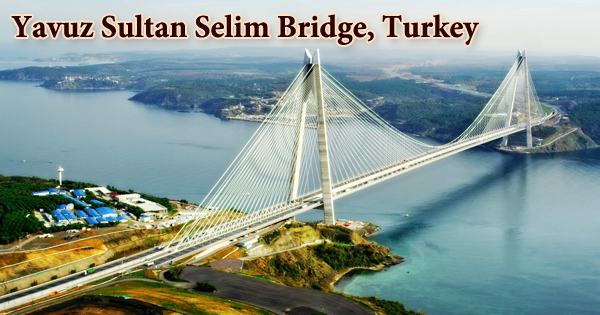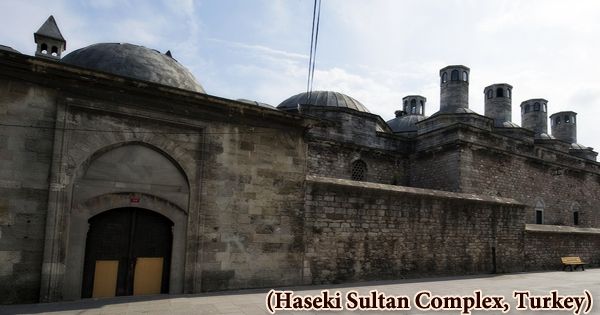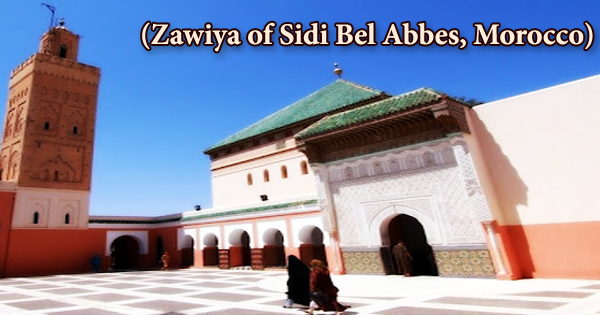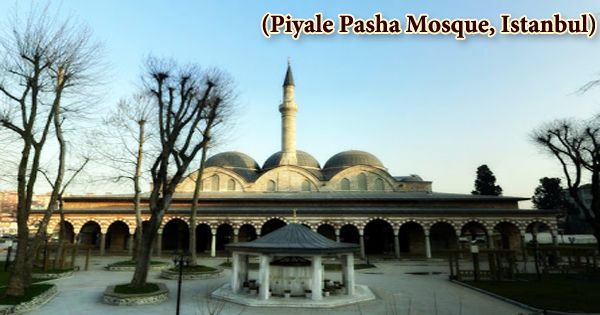The Yavuz Sultan Selim Bridge (Turkish: Yavuz Sultan Selim Köprüsü) is a combination of a suspension bridge and a cable-stayed bridge fitted with two 326-meter-high pylons. The 58.5-meter-wide bridge connects a double-track railway line with an eight-lane highway. It is a rail and motor vehicle bridge that spans the Bosphorus strait in Istanbul, Turkey, and is located to the north of two existing suspension bridges. The bridge was originally known as the Third Bosphorus Bridge (with 15 July Martyrs Bridge being the First Bosphorus Bridge and Fatih Sultan Mehmet Bridge the Second Bosphorus Bridge). The Yavuz Sultan Selim Bridge, which has been open to traffic since August 26, 2016, is situated near the Black Sea at the northern end of the Bosphorus. It was designed to carry long-distance traffic between the two continents in a broad arc around the city and is named after Ottoman Sultan Selim the Resolute. The bridge is one of three that spans the Bosporus Strait, which separates Asia and Europe. The bridge’s construction began in 2013 and was completed in 2016. The bridge is 2164 meters long, with a 1,408-meter main span. The bridge’s 322-meter-high towers make it the world’s second-tallest bridge structure. With a width of 58.4 meters (192 feet), the bridge is one of the world’s longest suspension bridges. The bridge holds two other world records: it is not only the bridge with the highest bridge piers, but it is also the world’s longest single-deck suspension bridge. The bridge is part of the planned 260-kilometer (160-mile) Northern Marmara Motorway (Turkish: Kuzey Marmara Otoyolu), which will link Knal, Silivri in the west, and Paşaköy, Hendek in the east, bypassing Istanbul’s urban areas in the north. The 58.4-meter-wide (192-foot) bridge spans 2,164 meters (7,100 feet) and has a main span of 1,408 meters (4,619 ft). The main span is the world’s ninth-longest suspension bridge. It is also known as the “bridge of firsts” because it is the first bridge in the world to carry an eight-lane highway and a two-lane railway on the same level. The bridge towers reach a height of 330 meters above sea level, making it the world’s tallest structure. The bridge is a hybrid road-rail bridge designed by Swiss engineer Jean-François Klein (project leader) and French structural engineer Michel Virlogeux of T-ingénierie (a Geneva-based company). In each direction, it carries four motorway lanes and one railway line. A steel box deck with orthotropic plating spans the central span (45,000 tons). The deck is concrete in the side spans.
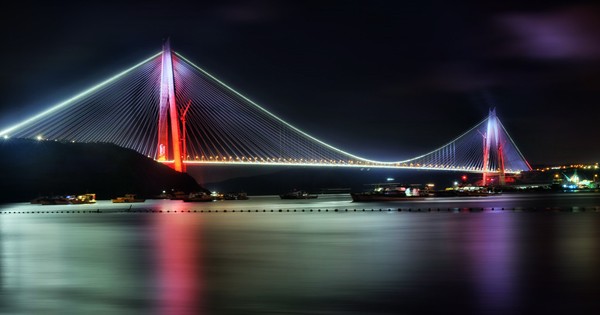
The bridge’s construction began on May 29, 2013, with a foundation stone laying ceremony, and was completed in August 2016. It was built on a build-operate-transfer (BOT) basis, with 7,000 construction jobs and 500 operational jobs produced. The structure was built by a consortium consisting of the Turkish company çtaş and the Italian company Astaldi, which won the contract on May 30, 2012. The bridge’s construction cost was estimated to be 4.5 billion TRY (approximately US$2.5 billion in March 2013). The bridge was built in just 27 months. It involved the building of 59 bridge floors, each measuring 5.5 meters in length. A fatal accident occurred during construction work on the connecting road to the bridge on the Asian side of the Bosphorus near avuşbaş, Beykoz, on April 5, 2014, at about 21:00 local time. Three workers were killed and another wounded when a 50-meter-high (160-foot) scaffolding collapsed as concrete was being poured at a viaduct. President Abdullah Gül named the bridge the Yavuz Sultan Selim Bridge during the ground-breaking ceremony, in honor of Ottoman Sultan Selim I (c. 1470–1520), who extended the Ottoman Empire into the Middle East and North Africa in 1514–1517 and earned the title of Caliph of Islam for the Ottoman dynasty after his conquest of Egypt in 1517. Because of Sultan Selim I’s alleged involvement in the Ottoman persecution of Alevis, protests by Alevis in Turkey have erupted over the bridge’s name. The third Bosphorus Bridge is being financed by seven banks, making it the largest amount of funding ever obtained for a greenfield project in a single contract in the Republic of Turkey’s history.
